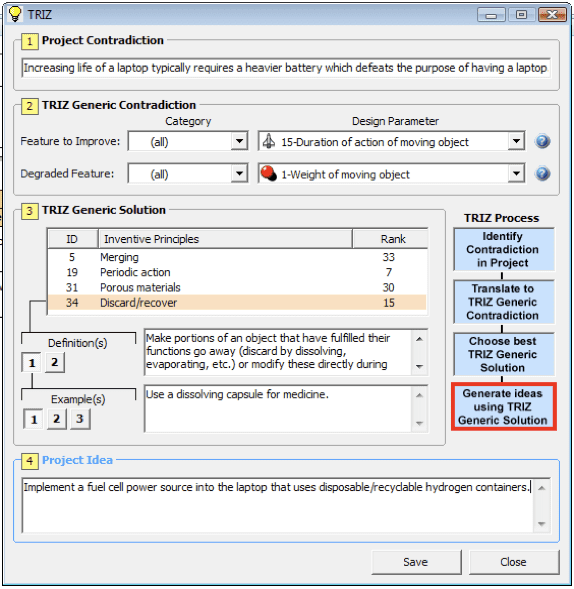SDI Tools is a set of commercial software add-in tools for Microsoft Excel developed and distributed by Statistical Design Institute, LLC., a privately owned company located in Texas, United States.
SDI Tools were first developed in 2000 by Dr. George Chollar, Dr. Jesse Peplinski, and Garron Morris as several Add-Ins for Microsoft Excel to support a methodology for product development that combined elements of Design for Six Sigma and Systems Engineering
Today, SDI Tools are split into two main Microsoft Excel Add-Ins called Triptych and Apogee.
Triptych is a Microsoft Excel Add-in that provides support for documenting and clarifying the voice of the customer (VOC), identifying and flowing down requirements, and generating and selecting design alternatives. Triptych includes functionality for:
QFD: Captures the voice of the customer and translates it into engineering requirements using Quality Function Deployment methods.Affinity Diagram: A Tool for sorting large number of ideas or concepts into logical groupings using the Affinity diagram method.AHP (Importance): Prioritizes (or ranks) Items by performing pair-wise comparisons of Items against each other in terms of relative importance using a one-level Analytic Hierarchy Process.TRIZ: Generates ideas for solving technical contradictions using the Theory of Inventive Problem Solving TRIZ.Pugh Matrix: Qualitative multi-criteria decision analysis using Pugh Concept Selection method.TOPSIS: Goal-based multi-criteria decision analysis using Technique for Order Preference by Similarity to Ideal Solution (TOPSIS) methodology.SDI Matrix: Quantitative multi-criteria decision analysis developed by Statistical Design Institute using Value Assessments for product specifications.FMEA: A risk assessment technique for systematically identifying potential failures in a system or a process using Failure mode and effects analysis.Apogee is a Microsoft Excel Add-In that integrates the capabilities of sensitivity analysis, Monte Carlo analysis, allocation, and multi-objective optimization into a single easy-to-use toolset. Apogee works with functions Y = f(x) that you create freeform in Microsoft Excel workbooks. Its functionality includes:
Sensitivity Analysis: Assesses the magnitude of response variation caused by the variation of the parameters using a Sensitivity analysis.Monte Carlo Analysis: Assesses the magnitude and shape of response variation caused by the variation of the parameters using the Monte Carlo method.Allocation: identifies the allowable amount of parameter variation that will improve response variation to a desired level. (Often referred to as statistical tolerance analysis or requirements flowdown.)Optimization: searches for new parameter values that will drive multiple response values to desired targets using statistical, multi-objective optimization driven by a custom genetic algorithm.SDI Tools are typically used in Six Sigma training, industry, and academic research

